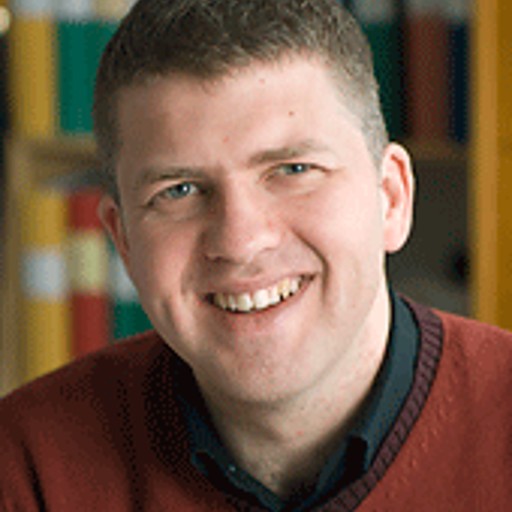Course syllabus adopted 2021-02-26 by Head of Programme (or corresponding).
Overview
- Swedish nameElektromagnetiska beräkningar
- CodeSSY200
- Credits7.5 Credits
- OwnerMPENM
- Education cycleSecond-cycle
- Main field of studyElectrical Engineering, Mathematics
- DepartmentELECTRICAL ENGINEERING
- GradingTH - Pass with distinction (5), Pass with credit (4), Pass (3), Fail
Course round 1
- Teaching language English
- Application code 20111
- Open for exchange studentsYes
Credit distribution
Module | Sp1 | Sp2 | Sp3 | Sp4 | Summer | Not Sp | Examination dates |
|---|---|---|---|---|---|---|---|
| 0108 Oral examination 7.5 c Grading: TH | 7.5 c |
In programmes
- MPBME - BIOMEDICAL ENGINEERING, MSC PROGR, Year 1 (compulsory elective)
- MPENM - ENGINEERING MATHEMATICS AND COMPUTATIONAL SCIENCE, MSC PROGR, Year 1 (compulsory elective)
- MPWPS - WIRELESS, PHOTONICS AND SPACE ENGINEERING, MSC PROGR, Year 2 (elective)
Examiner
 Thomas Rylander
Thomas Rylander- Head of Unit, Signal Processing and Biomedical Engineering, Electrical Engineering
Eligibility
General entry requirements for Master's level (second cycle)Applicants enrolled in a programme at Chalmers where the course is included in the study programme are exempted from fulfilling the requirements above.
Specific entry requirements
English 6 (or by other approved means with the equivalent proficiency level)Applicants enrolled in a programme at Chalmers where the course is included in the study programme are exempted from fulfilling the requirements above.
Course specific prerequisites
Basic courses in electromagnetics and some knowledge of MATLAB..
Aim
Numerical solution of Maxwell's equations plays an increasingly important role in modern electrical engineering. Improvements, both in computer technology and numerical algorithms, make it possible to solve many electromagnetics design problems by computations, rather than the traditional way by building and testing prototypes. This holds in as diverse areas as eddy current calculations for generators, electrical machines and transformers, microwave circuits and antennas, optical components, radar scattering and electromagnetic compatibility.
The course introduces the main methods in Computational Electromagnetics: Finite Differences, Finite Elements and the Method of Moments and applies them to model problems. Applications from different areas of electromagnetics are used to illustrate the strengths and weaknesses of the methods. The course aims at enabling the student to choose appropriate methods for industrial electromagnetics problems.
Learning outcomes (after completion of the course the student should be able to)
- Formulate and implement a basic computational algorithm in
- electromagnetics with
- the finite-difference scheme,
- the finite-element method and
- the method of moments.
- Perform basic assessment of the numerical error.
- Distinguish between different sources that contribute to the
- numerical error.
- Use basic extrapolation techniques.
- Choose between time, frequency or eigenvalue analysis for a given
- electromagnetic problem.
- Choose appropriate numerical technique for a given application.
- Choose appropriate post-processing tools for a given application.
- Operate commercial software in a well-informed manner.
- Evaluate the computational resources required to analyze a given
- industrial problem.
Content
Three main computational methods are studied in the course- Finite Differences for electrostatics and wave propagation in one, two and three dimensions. Staggered meshes for Maxwell's equations - FDTD (Finite-Difference Time-Domain, or Yee's method). Application to computation of capacitance and S-parameters of microwave circuits.
- The Finite Element Method (FEM) in one and two dimensions. Nodal and edge elements. Galerkin's method and variational formulations. Application to microwave cavities, magnetostatics and eddy current problems.
- The Method of Moments (MoM) in two and three dimensions. Integral formulation of electrostatics and Maxwell's equations. Green's functions and numerical integration. Application to capacitance calculation and electromagnetic scattering from a thin wire.
Organisation
The course is organized as lectures and exercise classes. The classes are oriented towards hand-in problems (MATLAB) dealing with application problems.Literature
T. Rylander, A. Bondeson and P. Ingelström, Computational Electromagnetics, New York: Springer, 2013.Examination including compulsory elements
Accepted hand-in problems and oral examination.The course examiner may assess individual students in other ways than what is stated above if there are special reasons for doing so, for example if a student has a decision from Chalmers about disability study support.